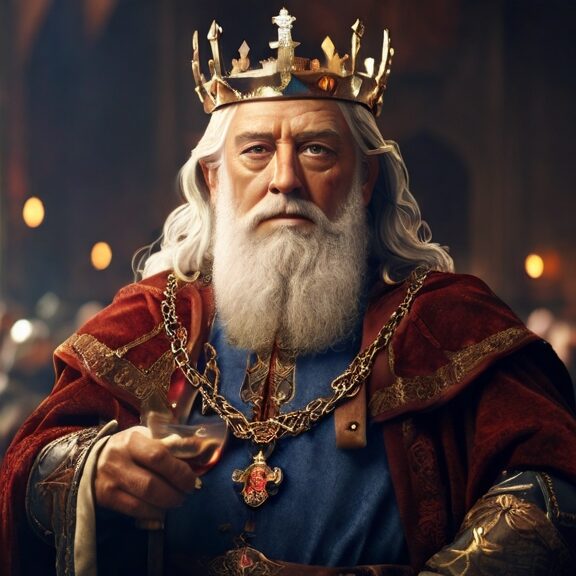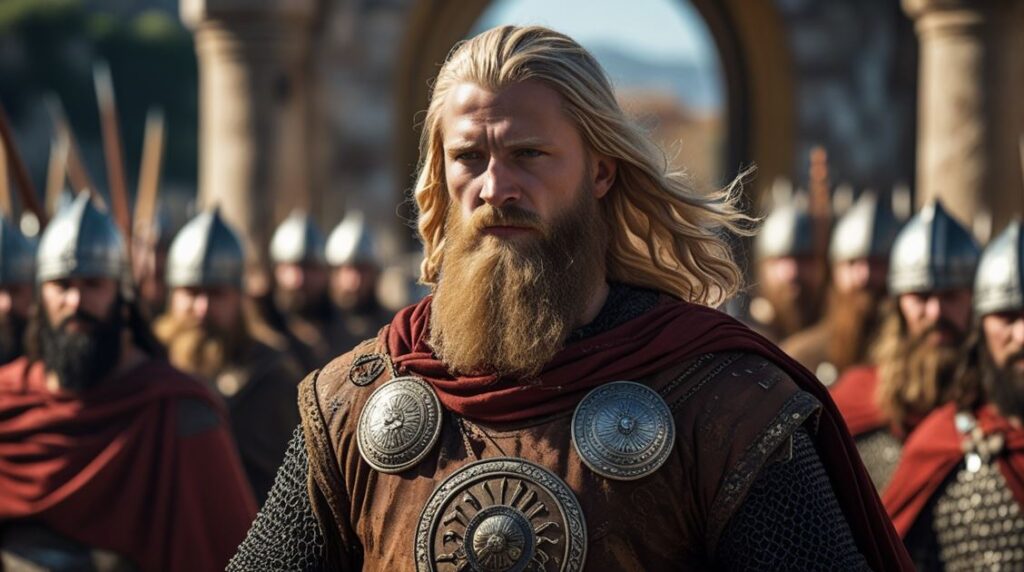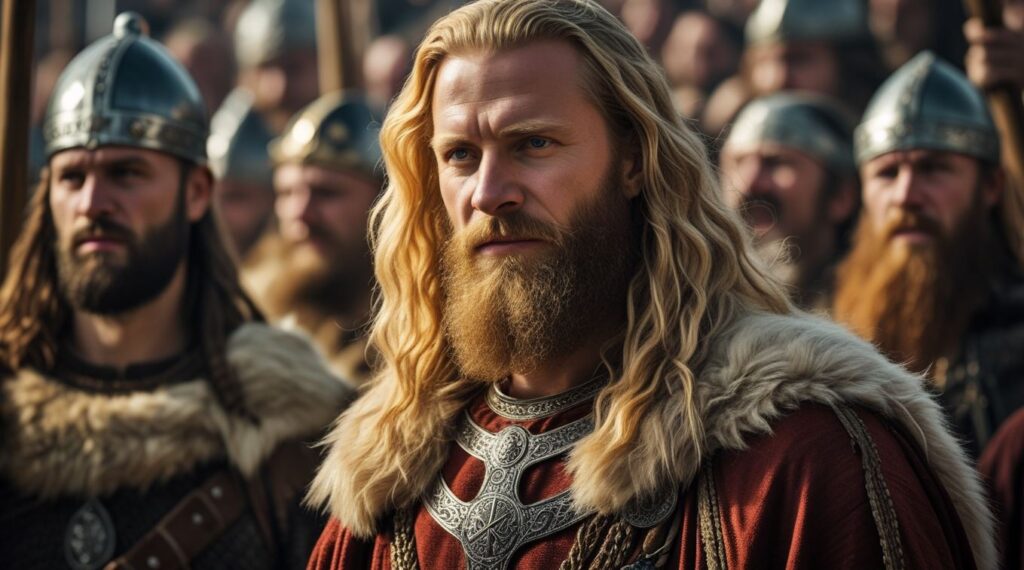How did Charlemagne improve the lives of people in Europe? Charlemagne’s transformative reign not only redrew the map of medieval Europe through military prowess but also breathed new life into the cultural and administrative fabric of the continent.
Charlemagne was a towering figure that shaped European history.
In this article, we explore Charlemagne’s influence as a catalyst for positive change, enhancing the lives of people in Europe in ways that continue to resonate.
1. Economic Development Under His Conquests
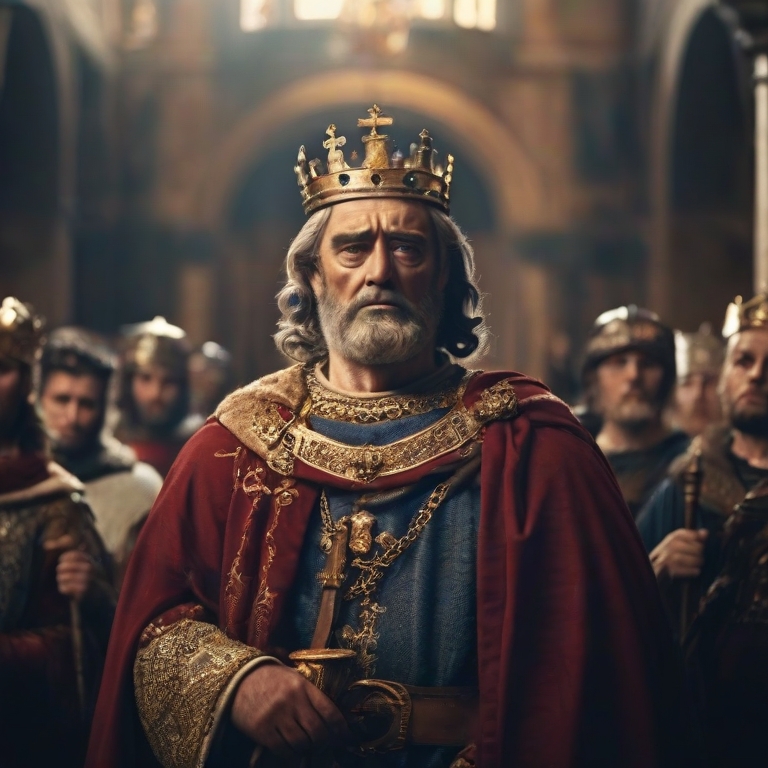
His vast empire and policies stimulated economic growth and raised living standards across the lands he conquered. Here are some of the key ways his conquests drove economic development:
Standardization of Weight, Measures and Customs
The standardization of weights, measures, and customs dues emerged as a transformative economic intervention that provided a catalyst for trade and commerce across the Carolingian Empire.
A merchant from Aachen could now trade with counterparts in Barcelona without the confounding disparities in measurement that previously hindered seamless transactions.
Prior to his conquests, many local currencies were in circulation.
He instituted a standard silver coinage system called the dinar across his empire. This facilitated trade and financial transactions across regions
Growth of Trade & Crafts
- His conquests united much of the known world under one ruler, enabling freer movement of merchants and goods
- Trade routes became safer, allowing trade to flourish across Africa, Asia and Europe
- Occupational specialisation and growth of crafts occurred in cities to meet expanding markets
Expansion of Infrastructure
- Roads, bridges, and other transport infrastructure were built for military mobility
- This infrastructure enabled the movement of civilian travellers and goods afterwards
- Transport hubs developed around infrastructure networks
Increased Tax Revenues
- His centralized bureaucracy was highly effective at collecting taxes
- Tax revenue funded further economic development projects
- It also enabled maintenance of a large, well-equipped army
So in many ways, his vast conquests also drove economic development, higher standards of living, and increasing sophistication of the economy across his empire.
2. Charlemagne’s Legal Reforms
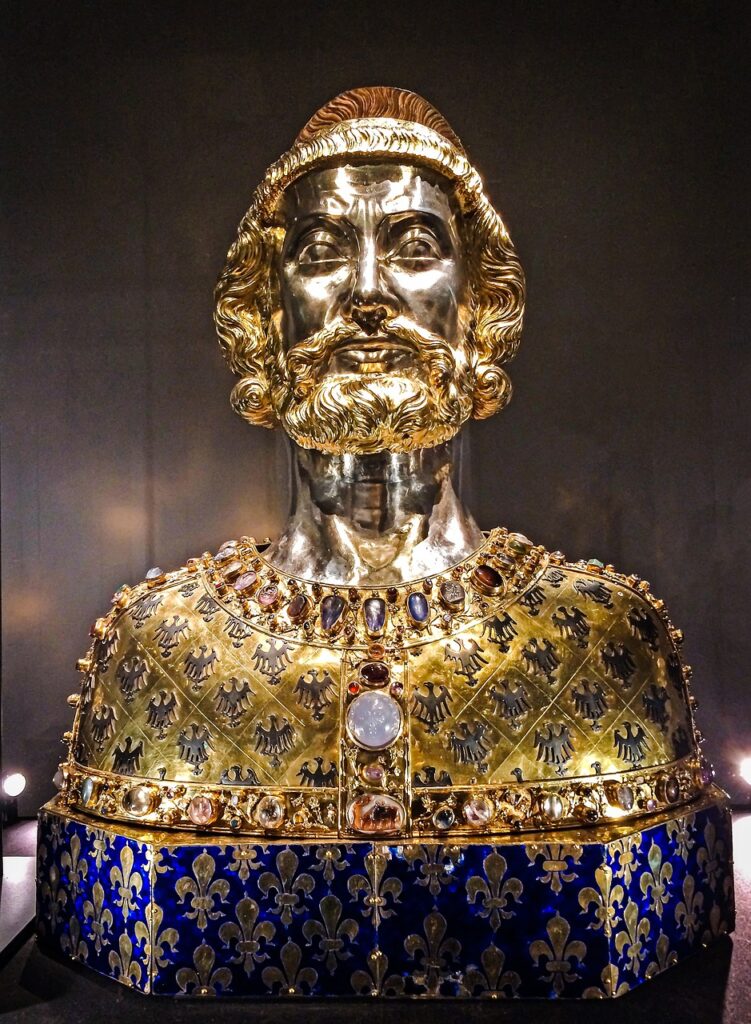
Charlemagne’s legal reforms were not mere amendments to a legal code. His vision aimed to create a legal framework that would stand as a beacon of fairness and stability for generations to come.
Legal Clarity
Charlemagne’s legal reforms injected a dose of clarity into the judicial landscape. The previous patchwork of regional laws was replaced by a unified legal code, offering a clear set of rules and regulations applicable throughout the empire. This newfound legal clarity meant that justice was not an elusive concept, but a tangible and comprehensible reality for all subjects.
Here is an overview of some of the main areas and topics covered under Charlemagne’s compiled system of imperial laws known as the Capitularies:
Administration and Government
- Regulations for royal, regional, and local administration
- Governance of specific territories and border regions
- Rules of conduct and responsibilities for nobles and elite officials
Military and Warfare
- Organization of the army, cavalry, infantry, and naval forces
- Requirements for soldiers to maintain weapons and serve in military campaigns
- Laws of war, treatment of prisoners, division of spoils
Taxation and Finance
- Tax collection, tax rates for various groups, and management of revenues
- Minting of coins and management of the imperial treasury
Religion and the Church
- Regulation of clergy, church feast days, tithes, canon law
- Education, scripture, and standards for religious services
Trade, Weights & Measures
- Currency standards, trade routes and tolls, regulation of markets and merchants
- Systems of uniform weights and measures
Social, Family and Land Laws
- Inheritance laws, marriage regulations, land management rules
- Governance laws for the general population
Criminal Justice
- Courts, judicial procedures, concepts of guilt and innocence
- Punishments for various civil and military crimes
So in essence, the Capitularies were intended as an encyclopedic codex that covered all aspects of Charlemagne’s empire and governance.
3. Ecclesiastical Governance
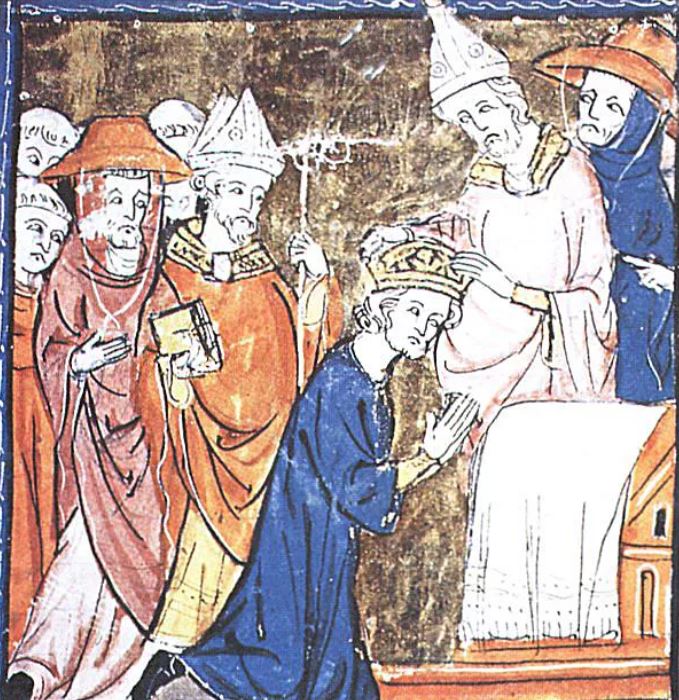
The reforms extended their reach to ecclesiastical matters, creating a symbiotic relationship between the throne and the altar. Ecclesiastical courts were integrated into the imperial legal system, providing a seamless interface between secular and religious justice. This fusion of spiritual and temporal authority brought about a sense of coherence in governance that resonated with the religious fabric of the empire.
Here is a summary of some of the key ecclesiastical and religious reforms implemented by Charlemagne:
Church Organization
- Granted lands to bishops and monasteries, bringing these institutions under control of the crown
- Standardized Mass rituals and church calendar across his domains
- Insisted on uniform use of the Filioque clause, affirming position of the Holy Roman Emperor on theological matters
Education and Standards for Clergy
- Emphasized education for clergy, requiring priests be able to read, write, perform Mass, and instruct congregations
- Set high moral standards for clergy through church councils and decrees
- Formal training programs established for priests to improve their education
- Monastic and cathedral schools established across the empire to provide religious and secular education
Doctrine and Scripture
- Promoted the use of Gregorian chant in religious music across churches
- Focused on control of doctrine and scriptural interpretations
- Issued commentaries on the meaning of scriptures to set standards of interpretation
Tithing and Administration
- Strict standards for tithing amounts the church could collect from people across the empire
- Regulations on testaments and use of church finances to reduce abuse
4. Social Stability
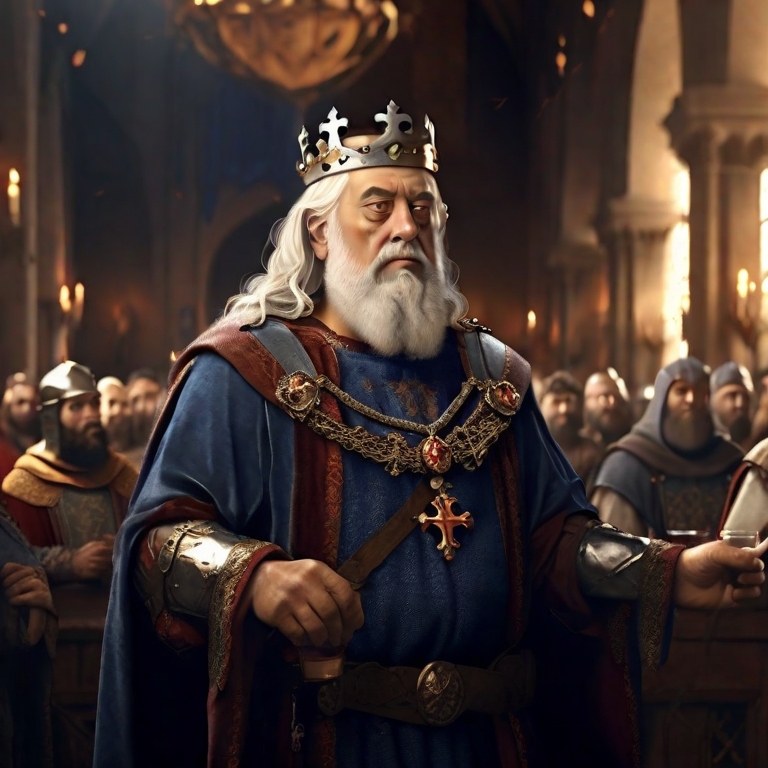
Beyond the courtroom and religion, Charlemagne’s legal reforms contributed significantly to social stability.
By codifying laws that addressed issues such as inheritance, property rights, and personal liberties, the emperor provided a stable foundation for societal order.
The legal system became a bulwark against chaos, ensuring that citizens could navigate their lives with a sense of security and predictability.
Some more details on Charlemagne’s land reforms include:
- He implemented a formal land grant system where undeveloped land, especially conquered lands, were granted out in return for oaths of loyalty and military service. This helped secure control of new territories.
- These land grants created a class of free warriors who served Charlemagne, allowing him to maintain a large military force. The grants were hereditary, passing to heirs.
- To keep estates and lands productive, Charlemagne issued decrees trying to limit the subdivision of properties over generations of inheritance. For example, requiring all heirs to continue living and working on the estate rather than splitting it into unusable small plots.
- His capitularies formalized primogeniture inheritance in cases where a clear heir was designated. This aimed to keep estates intact rather than breaking them into smaller divided parts if there were multiple children.
- Charlemagne also regulated the management and tax obligations attached to lands. Grantees had to maintain buildings, equipment, vineyards, etc. and pay taxes. This ensured lands stayed productive.
In general, much of the land reform was intended to balance rewarding loyalty and military service with ensuring lands were productively run and taxes paid so the empire prospered.
By providing clarity, integrating ecclesiastical and secular justice, and fostering social stability, these reforms fortified the Carolingian Empire against the storms of uncertainty. The impact of these legal foundations resonated for centuries, influencing subsequent legal systems and contributing to the development of a more equitable and ordered Western legal tradition.
5. Consolidation of Christianity: Fostering Cultural Unity

During Charlemagne’s reign, the consolidation of Christianity emerged as a key theme to foster a sense of cultural unity.
Charlemagne recognized the pivotal role of religion in both governance and cultural identity.
Scholarly Patronage
At the heart of the consolidation was Charlemagne’s patronage of scholarship within the Church. Monastic communities flourished under his sponsorship, becoming sanctuaries of learning and centers for the preservation of religious knowledge. This scholarly renaissance not only illuminated scriptural studies but also contributed to the intellectual vibrancy of the empire.
Monasteries like St. Martin of Tours became hubs where scholars delved into the depths of theology, philosophy, and classical literature, fostering a rich intellectual tradition.
Monastic Revitalization
The consolidation extended to the revitalization of monastic life. Monasteries, once the silent sentinels of faith, now became active agents in the dissemination of religious teachings. Monks played a pivotal role in not only preserving religious manuscripts but also in actively engaging with the cultural and spiritual questions of the day.
Monastic scriptoria, where monks meticulously copied and illuminated manuscripts, became vital in preserving and disseminating Christian and classical knowledge.
Preservation of Knowledge
Beyond the spiritual realm, the consolidation of Christianity under Charlemagne’s rule became a bulwark for the preservation of knowledge. The monastic libraries, nurtured by imperial support, housed a treasure trove of religious and classical works. This preservationist instinct not only safeguarded the cultural heritage of the Carolingian Empire but also acted as a bridge between the classical past and the medieval present.
The inclusion of classical works alongside religious texts in these libraries demonstrated the interconnectedness of classical and Christian knowledge.
Cultural Synthesis
The consolidation of Christianity acted as a cultural adhesive, bringing together diverse regions under a common spiritual umbrella. Charlemagne’s efforts to propagate a unified Christian doctrine fostered a shared cultural identity that transcended linguistic and regional differences. This cultural synthesis created a sense of belonging among the subjects of the empire, contributing to the cohesion of Carolingian society.
Religious festivals and ceremonies, standardized under Charlemagne, became communal events that reinforced a sense of shared cultural values.
Charlemagne’s consolidation of Christianity was a nuanced strategy that embraced scholarship, monastic life, the preservation of knowledge, and the promotion of cultural unity.
6. Charlemagne’s Quest to Learn: His Education Reforms

During his long reign as King of the Franks and Emperor of the Romans, Charlemagne enacted bold education reforms aimed at both strengthening his empire and reviving the study of art, religion, and philosophy in Europe.
His passion for learning led to major policy changes which dramatically reshaped education. Let’s explore these in more detail:
Promoting Literacy Through Religious Schools
- Ordered all monasteries and cathedrals to establish schools teaching reading, writing, and religion.
- Curriculum focused on copying texts of the Bible and classical Christian writings, which boosted literacy rates as more people learned to read and write Latin.
- Goal was to unify the church and spread religious education, but had the added benefits of preserving texts and expanding basic literacy.
Importing Brilliant Scholars
- Charlemagne broke from insular medieval traditions and brought in the brightest minds from across Britain, Italy, and other western kingdoms.
- He recruited renowned scholars of theology, astronomy, geometry and Greek studies to become part of his palace school in Aachen.
- Under his patronage, these imported intellectuals revived interest in liberal arts and classical wisdom from Rome and Greece.
Emphasizing Inquiry-Based Learning
- Palace school established by Charlemagne emphasized dialectic teaching methods – encouraging critical thinking and analysis through debate and dialogue between teacher and pupils.
- Open intellectual inquiry became a guiding principle; this departure from rote learning drove advancements in many fields.
- Best minds of the era were brought together in a collaborative environment that produced important early Medieval scholarship.
Preserving the Classics for Posterity
- Under Charlemagne, Frankish monks meticulously preserved ancient Latin and Greek texts that may have otherwise been lost to history forever.
- Supported the copying and protection of works from Roman thinkers, Christian theologians, ancient poets and playwrights.
- These documents and writings formed the basis of the Carolingian Renaissance – an expansion of art, literature, religion and science across 8th and 9th century Europe.
So in his own unique way, the post-Roman Emperor Charlemagne helped lay the foundation for the rediscovery of learning that accelerated Europe’s emergence from the Dark Ages. His education reforms may be his most underrated accomplishment.
7. Charlemagne’s Legacy

The Carolingian Renaissance: A Cultural Tapestry Woven by Literati
Charlemagne’s legacy was not confined to the pages of history but continued to resonate through the cultural revival known as the Carolingian Renaissance. This intellectual rebirth, like a phoenix rising from the ashes of the past, was characterized by a flourishing of artistic endeavors, scholarly pursuits, and the pivotal role played by literati.
Emphasis on Cultural Activities and Literati:
- Artistic Flourish: The Carolingian Renaissance witnessed a surge in artistic endeavors, from illuminated manuscripts to intricate architectural designs.
- Scholarly Prowess: Literati of the era, inspired by the patronage of Charlemagne, delved into classical studies, reviving ancient knowledge and blending it with contemporary thought.
- Cultural Synthesis: Literati became cultural architects, weaving together the threads of classical and Christian traditions, creating a tapestry that defined the cultural landscape of medieval Europe.
The Creation of the Holy Roman Empire: Shaping Governance and Western Civilization
Charlemagne’s crowning achievement was the creation of the Holy Roman Empire, a political entity that would wield influence for centuries to come. This imperial construct, a fusion of the sacred and the secular, left an indelible mark on governance and the course of Western Civilization.
Impact on Governance and Western Civilization:
- Political Structure: The Holy Roman Empire laid the groundwork for a new political order, integrating diverse territories under a centralized authority.
- Cultural Unity: Charlemagne’s vision for the empire fostered cultural unity, creating a shared identity that transcended regional differences.
- Influence on Future Dynasties: The imperial structure established by Charlemagne became a template for future dynasties, shaping the political landscape of Europe for centuries to come.
As the sun set on Charlemagne’s reign, the dawn of a new era illuminated by the Carolingian Renaissance and the Holy Roman Empire marked the enduring legacy of a ruler whose impact reached far beyond the boundaries of his time. The cultural vibrancy and political structures he set in motion echoed through the corridors of history, leaving an indelible imprint on the tapestry of Western Civilization.

